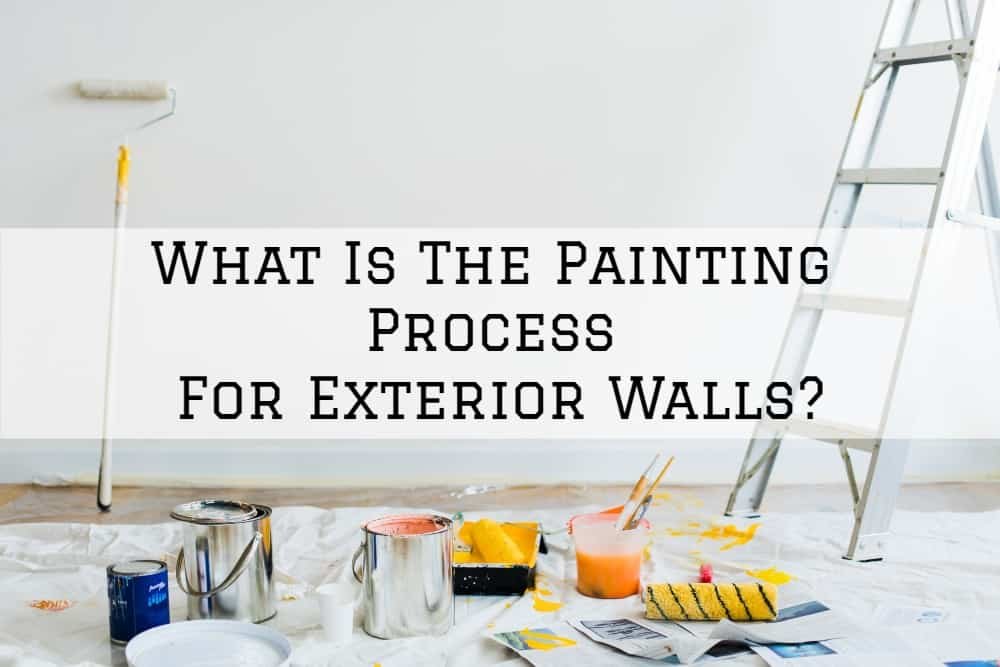What Is The Painting Process For Exterior Walls?
What Is The Painting Process For Exterior Walls?
Suppose you’re hiring a professional painting contractor in Amador County, California. In that case, you might wonder what happens during the painting process. Understanding the processes involved and their importance will help you appreciate the value of exterior painting.
Suppose you have received a painting estimate from a painting contractor. In that case, it will probably have details of the prep process, the number of paint coats, and timelines, among other information. To help you understand exactly what goes into exterior painting, we break down the main processes involved in this article. Have a look:
Cleaning
Paint doesn’t stick well on dirty or dusty surfaces; painting over any residue will cause the paint to peel and flake prematurely. The painter may clean the surface by hand using a sponge and a bucket of water or a pressure washer. The pressure washer works better and faster for most exterior jobs. It may be more efficient in removing dirt from within the cracks and crevices.
Repairing Damaged Surfaces
The painting contractor will typically walk around the entire perimeter of your house, taking note of damaged surfaces such as wood, metal, siding, masonry, or stucco. Repair any missing, damaged surfaces and fill holes and cracks using an epoxy filler. Once dry, sand the surface lightly using a medium-grit sanding block. Any rotten or damaged wood planks must also be replaced during the repainting process.
Paint Stripping and Sanding
Suppose the surface has any paint failure, such as paint peeling, cracking, flaking, or bubbling. In that case, the failed loose paint must be stripped off and the surface sanded to a smooth finish before the following processes occur. Paint stripping is especially important when the paint is already peeling off the surface.
Removing the old loose paint ensures that the previous failing paint doesn’t come off with your newly applied coat of paint. Painting over failing paint often leads to paint peeling, striping, and flaking within a short time. Sanding evens the rough edges of old paint, which might otherwise ruin your newly applied paint. Also, it creates a smooth surface for better paint adhesion.
Caulking The Trim
If the house has gaps between the walls and the trim around windows and doors, the contractor must use a caulking gun to fill in with the exterior caulk. If the house has mixed materials, such as siding and brick, the surfaces where different materials meet will probably need additional caulking.
Priming
Most exterior painting projects almost always require priming. Paint naturally doesn’t stick well to bare surfaces, and the primer helps improve adhesion and create a smoother surface. If you have dark, stubborn stains or are transitioning from darker to lighter shades, a primer will help prevent the dark colors from showing through your new coat of paint. You can improve the primer’s stain-blocking ability and paint coverage by tinting the primer with a bit of the paint.
The Bottom Line
The above is a quick run-through of the exterior painting prep face process and what to expect. After finishing the prep work, the painter may apply 2-3 coats of paint, depending on the nature of the paint job.
These are just the general processes, but the specific details might slightly differ depending on the size of the job, e.g., the material of the siding, the condition of the siding, and so on. Suppose you’re considering hiring a painting contractor in Amador County, California, to handle your deck staining. In that case, Hines Painting Company can be of help. Just call us at 209-256-4587 to book a FREE estimate and we will take over everything from thereon.
And if you are wondering if we serve Galt, CA. Then you are right! Just click the link and open Galt House Painter.


